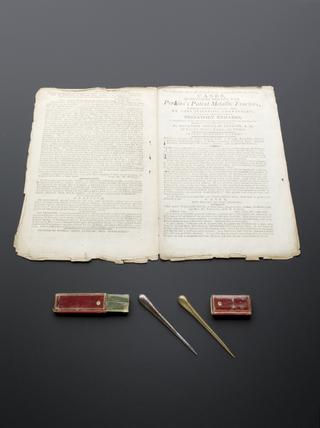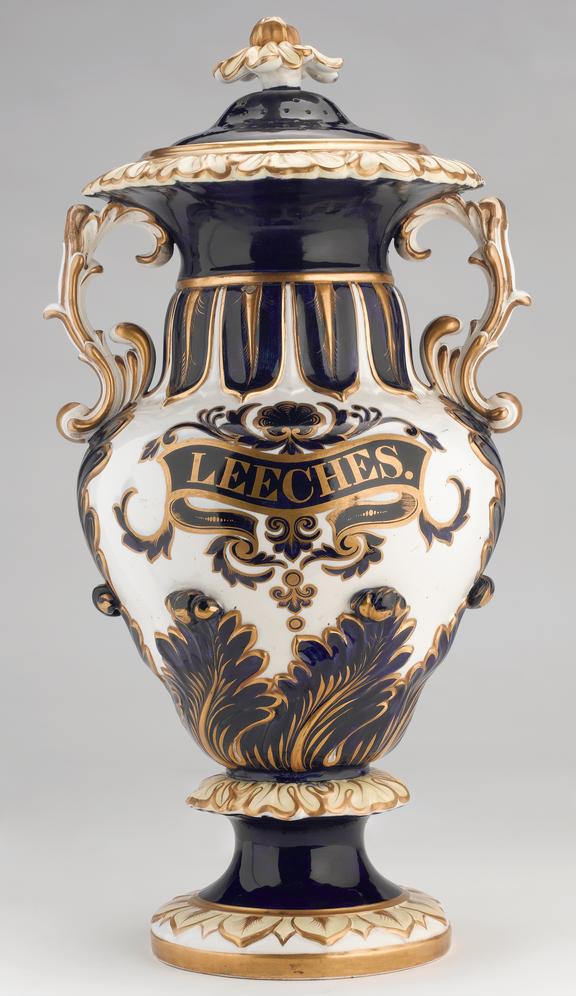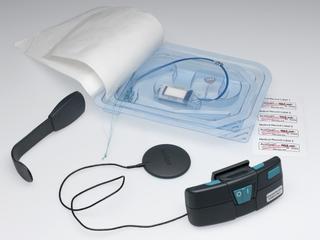
Leech jar, England, 1831-1859
- maker:
- Samuel Alcock and Company






Pharmacy leech jar, ornate blue gilt earthenware, by Alcock at Hill Pottery, Burslem, English, 1831-1859
Leeches were stored in this jar in a pharmacy before being sold to physicians for bloodletting, once a popular therapy believed to cure a range of conditions. Leeches are a type of worm which have a front sucker that draws blood from the body. They were collected from river beds by women. Demand was so great that by the 1830s supplies were running short. Today, leeches are used to reduce swelling following reconstructive surgery.
The jar was made by Samuel Alcock & Co, a pottery manufacturer based in Stoke-on-Trent, England.
Details
- Category:
- Therapeutics
- Collection:
- Sir Henry Wellcome's Museum Collection
- Object Number:
- A43107
- Materials:
- earthenware and complete
- Measurements:
-
overall: 510 mm x 245 mm x 220 mm, 4 kg
weight: 4kg
weight: 8.81854lbs
- type:
- leech jar




